|
SpaceTides e-zine
#38 - 19 January 2006
Internet
Newsletter of ASSA Bloemfontein Centre,
South Africa, to the public
www.assabfn.co.za/spacetides
|
In this issue of SpaceTides
|
INDEX
1. Spaceflight news from around the world
2.
Astronomy news from around the world
3. Interesting space facts
4. Space questions
5. Sky Observation log
6. Amateur Astronomers' Corner
7. Astronomy & Science in Southern Africa
8. Educational Astronomy in the US
9. Web links & Net nodes
|
Dear
SpaceTides Subscribers
All
the best for the year 2006 from SpaceTides. Hope everything turns
out as planned (and if it doesn't, it might indicate either bad
planning or inadequate follow-through of the planning.)
Astronomy enthusiasts in South Africa can look forward to another
exciting year in astronomy - lot's of events and happenings on Earth
and in the sky to look forward to. SpaceTides will keep you informed
of any dates worth mentioning.
Congratulations
to our 2006 Sky Guide lucky draw winners. They are C Mill, C Verwoerd
and J Naudé. You have been contacted and your copy of the
Guide should either be in the post or you might already have received
it. If you don't receive it by end of January, send us a mail.
Gerrit
Penning
Editor:
SpaceTides Newsletter; Member: ASSA Bloemfontein Centre
spacetides@assabfn.co.za
|
|
Total
subscribers as at 19 January 2006: 394 (+14 from previous issue, no. 37)
(When the subscriber count reach 400, SpaceTides will be unofficially upgraded
to "e-zine status" as compared to an e-newsletter).
|
|
|
1. Spaceflight news from around the world
|
|
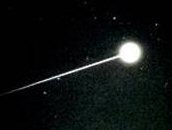
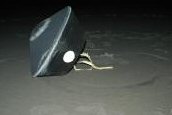
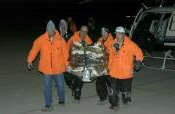
Images: NASA/JPL
|
Stardust Sample Returns to Earth!
Adapted from a Johnson Space Center article, Houston - 17 January 2006
The Stardust spacecraft's Sample Return Canister has arrived at
NASA's Johnson Space Center, Houston.
The spacecraft, which traveled in space for 7 years, finally returned
to Earth with its precious cargo of comet and interstellar dust.
It ejected a canister into the atmosphere, which reentered in a
fiery blaze to land by parachute in the Utah desert in the US.
The canister containing the dust was removed and transported to
Houston. Scientists in a special laboratory will open the canister,
analyze the comet and interstellar dust samples and prepare the
contents for many years of study that will surely follow. An investigator
calculated that there might be more than a million microscopic specks
of dust embedded in Stardust's aerogel collector.
Comets may contain clues about the formation of the planets and
moons, seeing that they are extremely old and come from the outer
edges of the solar system.
Reentry gallery: http://reentry.arc.nasa.gov/gallery1.html
Stardust homepage: http://stardust.jpl.nasa.gov/home/index.html
|
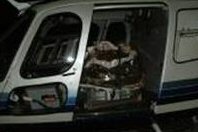 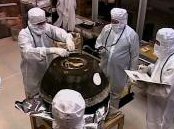 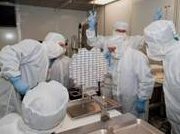
|
|
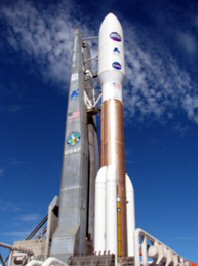
Launch vehicle
of the New Horizon's spacecraft. JPL/NASA
|
To Pluto and
Beyond: New Horizon set to blast off
New
Horizon's Homepage: http://pluto.jhuapl.edu/,
19 January 2006
Humans
have sent unmanned probes to each and every known planet in the
solar system, except for Pluto. The best photos of planets usually
come from satellites that either flew by, orbited or even landed
on them, but for Pluto we have to make do with ground-based telescope
images.
Not for long! Finally, after (too many) years, a spacecraft is ready
to launch towards Pluto. It won't arrive there any time soon though.
The probe will be traversing space for over 10 years before reaching
Pluto! As indicated on New Horizon's website:
" Planetary exploration is a historic endeavor and a major focus
of NASA. New Horizons is designed to help us understand worlds at
the edge of our solar system by making the first reconnaissance
of Pluto and [it's moon] Charon - a "double planet" and
the last planet in our solar system to be visited by spacecraft.
Then, as part of an extended mission, New Horizons would visit one
or more objects in the Kuiper Belt region beyond Neptune."
More
at: http://pluto.jhuapl.edu/overview/whyGo.html
Launch
is slated for today, January 19, 2006. Hold thumbs! We live in exciting
times.
|
|
2. Astronomy news from around the world
|
|

Dark matter
in the high-redshift cluster CL 0152-1357. Gravitational lensing
analysis with the Advanced Camera for Surveys (ACS) reveals the
complicated dark matter distribution (purple) in unprecedented detail.
|
Fossil Galaxy
Reveals Clues to Early Universe
From
John Hopkins University New Release, 9 December 2005
(A difficult
topic for this month's edition: Dark matter! If any of you know
anything about it, you know more than I do. Sounds fascinating though,
something to really read up on. - GP)
Using
the Hubble Space Telescope, astronomers have mapped the location
of "invisible dark matter" in extreme detail in two very
young galaxy clusters.
A research scientist said the team measured the subtle gravitational
'lensing' apparent in Hubble images: the small distortions of galaxies'
shapes caused by gravity from unseen dark matter - to produce its
detailed dark matter maps.
The study supports the theory that dark matter (which makes up 90
percent of matter in the universe) and visible matter should coalesce
at the same places due to gravity pulling them together. Concentrations
of dark matter should attract visible matter, and as a result, assist
in the formation of luminous stars, galaxies and galaxy clusters.
http://www.jhu.edu/news_info/news/home05/dec05/darkmatt.html
|
|
3. Interesting Space Facts
|
|

One of the Voyagers. JPL NASA
|
The Voyager spacecraft
The two Voyager space probes are still functioning, after being
operational for more than 10 000 days.
Operations mainly consist of sending back weak signals about the
spacecraft's environment. As of November 2005 (http://voyager.jpl.nasa.gov/mission/weekly-reports/index.htm)
Voyager 1 was 14.5 billion km from the Sun and Voyager 2 was 11.6
billion km away. To compare - Pluto is about 6 billion km
(40 AU's) from the Sun. They are not very far in cosmic terms though.
It will take them 40 000 years just to reach a distance equal to
half-way (2 light years) between the Sun and our nearest star Alpha
Centauri.
On 17 February 1998, Voyager 1 passed
Pioneer 10 to become the most distant human-made object in space.
From
(with more information and diagrams):
http://voyager.jpl.nasa.gov/mission/interstellar.html
|
- Why
are planets round?
Planets
are round due to their gravitational fields. Its centre of gravity
is constantly "pulling" on the massive planet. The best
way to get all the planet's material as close as possible to the
centre is to let the materials form a sphere. The process is called
"isostatic adjustment". (extract from Scientific American's
"Ask the Experts" book).
The Sun is a ball of "burning" gas about 1.4
million km in diameter. Fortunately for us the Sun is quite an ordinary
middle-of-the-road type of star: if it was 10 times bigger, it would
already have burned up most of its fuel. If it were 10 times smaller,
it would not have emitted enough light and energy for life to exist
on Earth. The Sun's heat at its photosphere (surface) is a "mere"
6 000 degrees Celsius (not much if you compare it to a Space Shuttle's
engine which can become 3 400° C). The centre of the Sun is a different
story though: 15 million° C! Not the best place to hang out in summer.
Or winter! I'm sure the people from Upington won't mind the temperature
though.
|
|
January
Planets:
For the second part of January, Mercury is not visible due
to the glare of the Sun. From the 4th week in January, Venus
becomes the "morning star". The Earth is the planet
you probably reside on at the moment (except if you intercepted
this e-mail with your spaceship out there in the asteroid belt)
and if you look down, you should be able to clearly see it. Mars
can be seen in the evening sky, with a peculiar red shine (it is
now a good time to observe Mars). Jupiter is currently visible
early mornings before sunrise. Saturn, the most beautiful
planet through a telescope, can be seen during the evenings and
all through the night from late January. Uranus sets in
the west around 21:00. Neptune sets between 19:00 and 20:00
in the second half of the month. Pluto rises in the morning
before 3:00. Note that Uranus and Neptune are not visible with the
eye or ordinary-sized binoculars. Pluto requires a strong telescope.
|
|

The constellation of Orion visible above the building housing the
13 inch Alvin-Clark refractor at Boyden Observatory, Bloemfontein,
SA.
|
January
Constellations:
Constellations well placed in the evenings for observation include
Eridanus (the River, a very long and difficult constellation right
above you!), Orion (the Hunter), rising Canis Major (the Greater
Dog), Taurus the Bull. In the south, you can try to find some of
the lesser known constellations such as Phoenix, Dorado (the sword
fish) Reticulum (the net or reticule), Hydrus (the sea monster)
and for those up to a challenge: Sculptor and Horologium. You can
also see the Large and Small Magellanic clouds quite well in the
south.
Full moon on 14 January 2006. New Moon on 29 January
2006.
Be
sure to observe Saturn pass close by the Beehive cluster
(M44) in the constellation of Cancer later in January 2006.
Bron:
ASSA webblad, Sterrekyk vir Januarie 2006, deur Auke Slotegraaf.
http://www.saao.ac.za/assa/html/sterrekyk_2006_januarie.html
|
|
6. Amateur Astronomers' Corner
|
|
 Exposed
photo showing an 11 inch reflector illuminated with a red-filtered
flashlight on the observing platform at Boyden Observatory, Bloemfontein,
SA. Using appropriate intensity for red lights is very important.
Credit ASSA Bloemfontein . Exposed
photo showing an 11 inch reflector illuminated with a red-filtered
flashlight on the observing platform at Boyden Observatory, Bloemfontein,
SA. Using appropriate intensity for red lights is very important.
Credit ASSA Bloemfontein .
|
Seeing
in the Dark.
Seasoned
sky observers will no doubt concur that there is nothing worse than
the shine of a streetlamp directly in your eyes while you're trying
to get a hold of that eluding faint little fuzzy.
It can take up to 20 minutes for your eyes to properly adapt to
dark conditions. Here are a few tips on making the most of that
precious dark spot: Make sure you take everything with you when
going outside to avoid having to go back into the house. In your
observing location, consider blocking out unwanted light with sails
or canvas bought from a hardware store. Using the right red-filtered
flashlight is also crucial. Invest in proper lighting and your observing
sessions will be much more convenient. If using a computer, make
sure you use the software program's night vision option to change
the screen to acceptable colours.
And
last but not least: do yourself a favour now and then and drive
out of the city in order to see how life should REALLY look like
at night! If you do drive out, rather go south of the city lights
- the southern parts of the sky, as well as the part above your
head, usually contains the best objects for observing through a
binocular or telescope.
|
|
7. Astronomy & Science in Southern Africa
|
|

|
SAASTA
"The
South African Agency for Science and Technology Advancement
(SAASTA) aims to advance public awareness, appreciation and engagement
of science, engineering and technology in South Africa". It
is an agency of the National Research Foundation (NRF). " The
NRF is the key public entity responsible for supporting human resource
capacity for research, technology and innovation development in
the fields of science and technology." SAASTA boasts an impressive
website which can be found at http://www.saasta.ac.za/
Be
sure to check out the Science Photography competition before
27 Jan 06!
|
For
other SA Astronomy websites, go to the SpaceTides SA Astronomy
Portal at:
www.assabfn.co.za/spacetides/sa_astronomy.htm
|
8. Educational Astronomy in the US
|
 |
Exploratorium - San Francisco,
CA
The size of the Exploratorium is something to behold! Set in the beautiful
Marina District of San Francisco near the Golden Gate Bridge,
the Exploratorium is a favourite with young and adult visitors
alike. From their website: "The
Exploratorium is an experimental, hands-on museum designed to spark
curiosity - regardless
of your age or familiarity with science. With hundreds of exhibits
to touch, look through, pick up, and tinker with, let curiosity be
your compass to endless discoveries! Located in the Palace of Fine
Arts, near the Golden Gate Bridge. Only in San Francisco". Touching
is believing.
Website:
http://www.exploratorium.com/ |
 |
|



